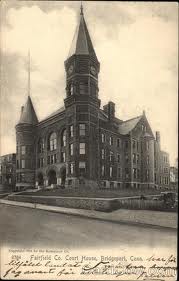Connecticut Supreme Court Rules That Plaintiff Must Use Expert Testimony To Prove That Work With Defendant’s Product Can Create Respirable Dust
By Cullen Guilmartin, Hartford and Lauren Neureither, Hartford on December 11, 2017
In Bagley v. Adel Wiggins Grp., No. 19835, 2017 Conn. LEXIS 304 (Nov. 7, 2017) Connecticut’s Supreme Court directed the trial court to grant defendant’s directed verdict where there was no expert testimony that decedent’s work with defendant’s adhesive can create respirable asbestos fibers. Both negligence and strict liability claims failed because plaintiff did not prove that the subject product, an adhesive used in the manufacture of helicopter blades, was unreasonably dangerous or that the adhesive was the legal (proximate) cause of plaintiff’s decedent’s mesothelioma. The court required that plaintiff use admissible expert testimony to prove that the adhesive emitted respirable asbestos fibers, and that without such evidence a direct4ed verdict for the defense was proper.
 In Bagley, the plaintiff executrix of decedent’s estate sought damages pursuant to Connecticut’s Product Liability Act (§ 52-572m et seq.) (the “CPLA”) for inter alia, wrongful death of the decedent under both negligence and strict liability theories. The evidence at trial showed that, for approximately ten (10) months in 1979 and 1980, the decedent worked as a manufacturing engineer at Sikorsky. Plaintiff’s decedent’s office was on a mezzanine above the helicopter blade shop where defendant’s adhesive, FM-37, was used to bind together interior parts of the blades. The evidence further showed that FM-37 contained 8.6% asbestos and was chiseled or sanded off if it ended up on unwanted portions of the blades. Decedent was diagnosed with mesothelioma in 2011 but acknowledged, to his medical providers before his death, that he had been exposed secondarily to asbestos through his father’s work at a shipyard.
In Bagley, the plaintiff executrix of decedent’s estate sought damages pursuant to Connecticut’s Product Liability Act (§ 52-572m et seq.) (the “CPLA”) for inter alia, wrongful death of the decedent under both negligence and strict liability theories. The evidence at trial showed that, for approximately ten (10) months in 1979 and 1980, the decedent worked as a manufacturing engineer at Sikorsky. Plaintiff’s decedent’s office was on a mezzanine above the helicopter blade shop where defendant’s adhesive, FM-37, was used to bind together interior parts of the blades. The evidence further showed that FM-37 contained 8.6% asbestos and was chiseled or sanded off if it ended up on unwanted portions of the blades. Decedent was diagnosed with mesothelioma in 2011 but acknowledged, to his medical providers before his death, that he had been exposed secondarily to asbestos through his father’s work at a shipyard.
The plaintiff called multiple witnesses during trial, including a former co-worker of the decedent and three experts. It was established at trial that the decedent was exposed to dust from the sanding of FM-37, that FM-37 contained 8.6% asbestos and that the inhalation of asbestos fibers is a cause of mesothelioma. At the close of plaintiff’s evidence, the defendant moved for a directed verdict, which was denied by the trial judge. The jury subsequently returned a verdict of $804,777 for the plaintiff on the strict liability, negligence, and loss of consortium claims. Following the jury verdict, the defendant filed a motion to set aside the verdict and for judgment notwithstanding the verdict, which was again denied by the trial court.
The Connecticut Supreme Court agreed with the defendant. Because the plaintiff failed to prove that respirable asbestos fibers were released from defendant’s adhesive, there was insufficient evidence to show either that the adhesive was dangerous, or that it was the legal cause of the decedent’s mesothelioma. Therefore, the court reasoned that the trial court improperly denied both the defendant’s motion for directed verdict and motion to set aside the verdict for motion notwithstanding the verdict. Moreover, the court directed the trial court to grant the defendant’s motion for directed verdict.
The court reasoned that, while one of the plaintiff’s experts opined that the defendant’s product could have caused the decedent’s mesothelioma, the expert’s opinion was not based on any evidence specific to defendant’s product. In this regard, none of the experts or witnesses performed any testing or examination of defendant’s or any similar product to establish that respirable asbestos fibers may be emitted when the product is sanded. The court reasoned that there was also no evidence presented that plaintiff’s causation expert had any specialized knowledge concerning how modified epoxy adhesives behave under the conditions in the Sikorsky blade shop. Because of these gaps in the evidentiary record, the court found that the jury could not have relied on this expert opinion to find that the decedent had been exposed to respirable asbestos fibers from defendant’s product.
The Bagley decision is undoubtedly a victory for defendants in the Connecticut asbestos litigation. In particular, the court made it more difficult (and more costly) for plaintiffs to pursue newer asbestos defendants or to pursue new product lines. This is especially true where plaintiffs’ experts have yet to test the new product for creation of respirable asbestos fibers during work allegedly performed by their plaintiffs. Defendants in the Connecticut asbestos litigation should be aware of the Bagley decision and the requirement for specialized testing or knowledge regarding release of asbestos fibers from a particular type of product.
A link to the Connecticut Supreme Court’s decision is available here: http://jud.ct.gov/external/supapp/Cases/AROcr/CR327/327CR114.pdf

 Since the United States Supreme Court’s decision in Daimler AG v. Bauman, 134 S. Ct. 746 (2014) defendants, especially those defending product liability claims, have increasingly pursued motions to dismiss on personal jurisdiction grounds. A Connecticut superior court
Since the United States Supreme Court’s decision in Daimler AG v. Bauman, 134 S. Ct. 746 (2014) defendants, especially those defending product liability claims, have increasingly pursued motions to dismiss on personal jurisdiction grounds. A Connecticut superior court  A Connecticut state court jury recently returned a defense verdict in case alleging injury from exposure to asbestos that drifted into the air from a facility, but in doing so thrust to the forefront the potential of future similar claims in Connecticut. In
A Connecticut state court jury recently returned a defense verdict in case alleging injury from exposure to asbestos that drifted into the air from a facility, but in doing so thrust to the forefront the potential of future similar claims in Connecticut. In  Although by no means a “hell hole” jurisdiction, it is difficult for a peripheral asbestos defendant to obtain summary judgment in Bridgeport Superior Court in Connecticut. Once summary judgment is denied, many asbestos defendants with questionable liability will often settle out rather than risk the financial exposure of an adverse result in a mesothelioma jury trial. It is helpful for a company to have a well thought out appellate strategy in mind before selecting a jury in that jurisdiction. One recent asbestos trial did not turn out well for a trade association defendant..
Although by no means a “hell hole” jurisdiction, it is difficult for a peripheral asbestos defendant to obtain summary judgment in Bridgeport Superior Court in Connecticut. Once summary judgment is denied, many asbestos defendants with questionable liability will often settle out rather than risk the financial exposure of an adverse result in a mesothelioma jury trial. It is helpful for a company to have a well thought out appellate strategy in mind before selecting a jury in that jurisdiction. One recent asbestos trial did not turn out well for a trade association defendant..